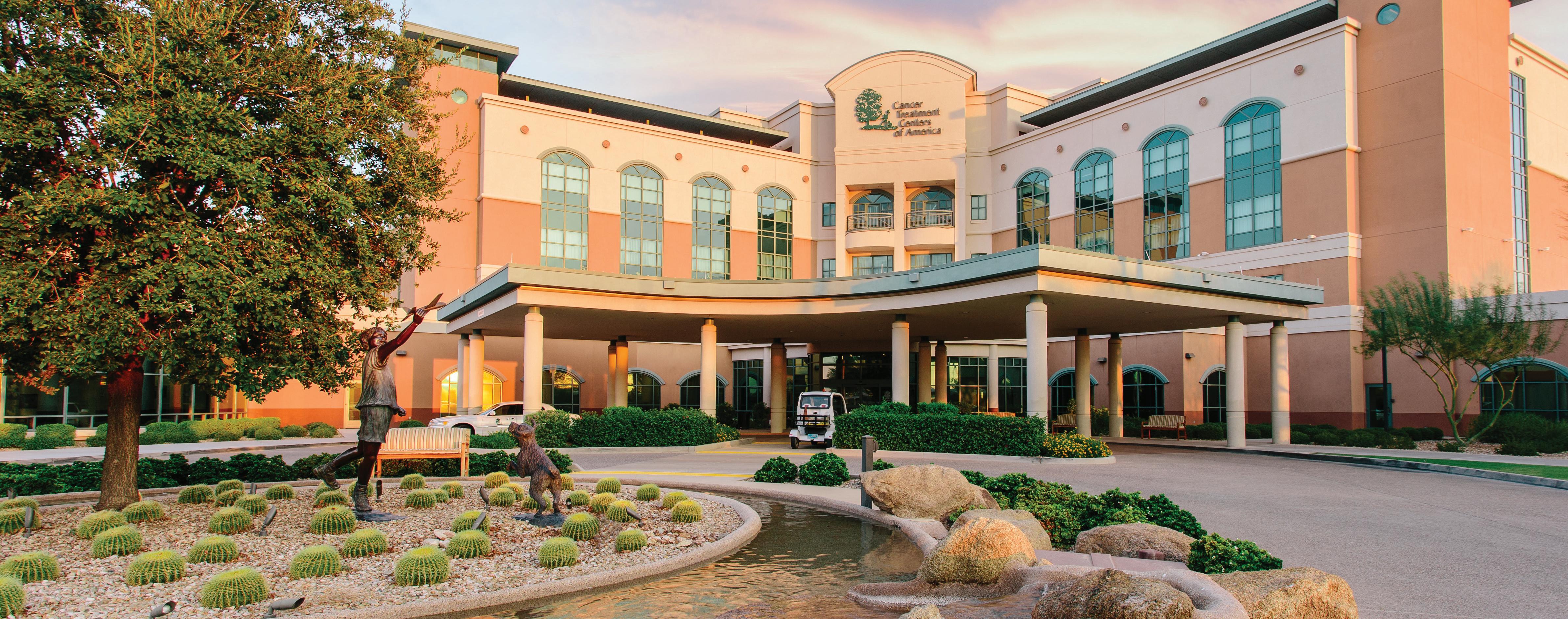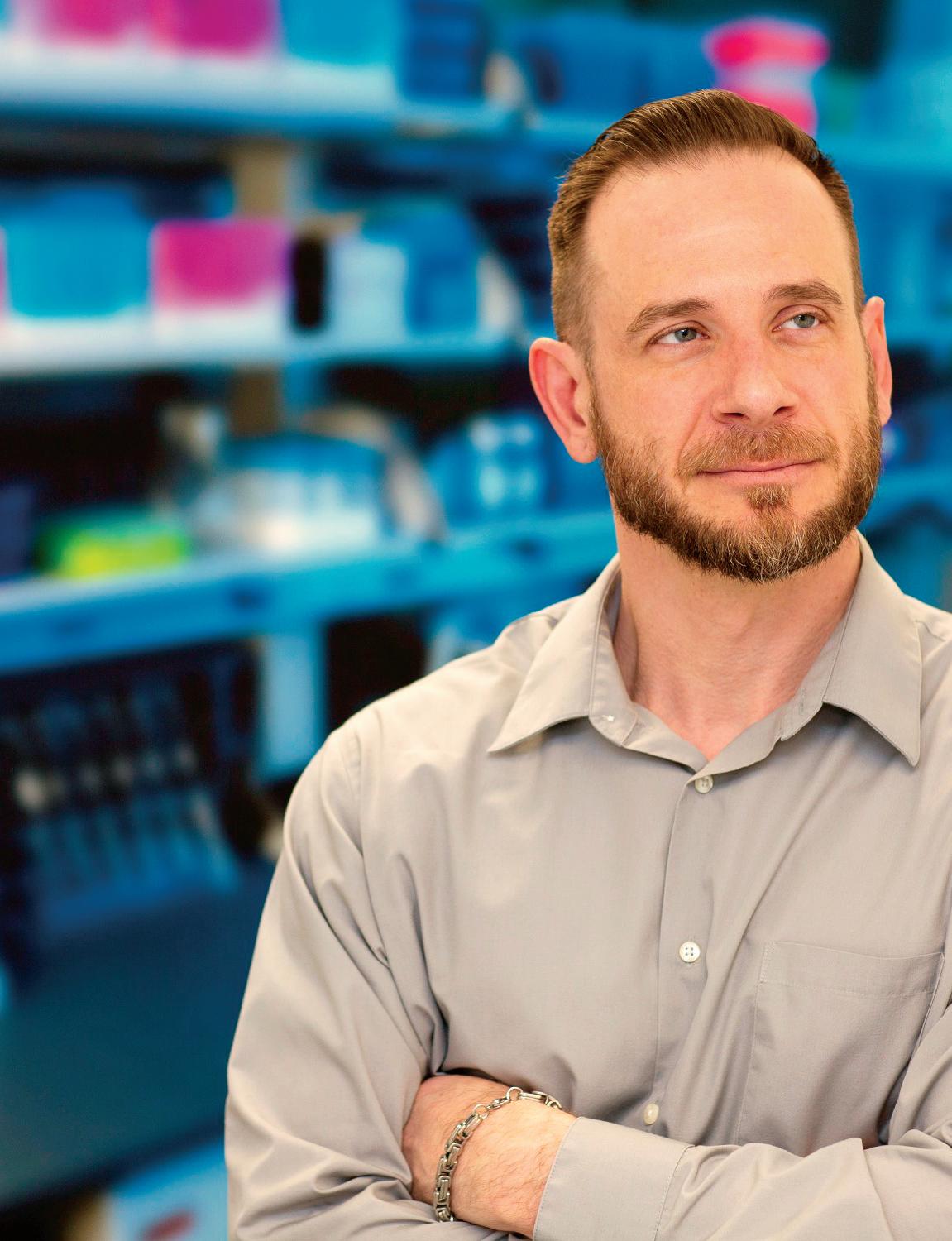
7 minute read
A Human Connection: Serving patients at their most vulnerable
Saba Radhi, MD, knew she wanted to be a physician when she was still in high school. While her parents thought perhaps she should chose a career as a lawyer, Radhi considered ways that she could give back to the world and to her community, while also pursuing something that interested her. Medicine was a very clear choice.
“The human body is the most fascinating thing to study,” she said. So combining her love of science and desire to serve, she attended the Sultan Qaboos University, College of Medicine & Health Sciences, in Oman.
After graduating she moved to the United States and pursued a Masters of Science in Clinical and Biomedical Investigations at The University of Southern California Keck School of Medicine. She completed her residency in Internal Medicine in Lubbock, Texas, at the Texas Tech University Health Science Center, where she also went on to complete a fellowship in Medical Oncology and in Geriatric Medicine.
After moving to Arizona with her family, Radhi began working for Cancer Treatment Centers of America (CTCA) in Phoenix, Arizona, in 2017.
Daily Reward
Radhi was fascinated by the incredible advancements in oncology, and felt it was uniquely situated to provide her with the ideal combination she had been looking for – the challenge of scientific research and application, combined with an incredibly close patient-physician relationship.
Many of her former patients keep in touch. Radhi described one patient in particular, a woman in her 30s she treated during her fellowship in Texas, who is now approaching 5 years free from her cancer. She still sends Rahdi a text whenever she has a follow-up appointment, communicating updates, asking questions, and sharing photos of her beautiful daughter.
“I think it is one of the most rewarding careers,” Rahdi said. “It is a really humbling experience.”
As an oncologist, Radhi helps patients during what is perhaps the most frightening and vulnerable time of their lives. Treatment methods in the field have come an incredibly long way, and whether she is able to see her patient through to remission and a long, cancer-free life, or to hold their hand until they reach the end of the road, she is awed and inspired by each of her patients, and cites them as her constant motivation.
Her philosophies on caring for her patients may in part be motivated by her own experience. Early in her medical training, one of Radhi’s close family members was diagnosed with a particularly aggressive form of brain cancer. In even the best-case scenario, his life expectancy was little more than a year.
Rahdi recalled one instance where she and her team of physicians wanted to treat their patient with a certain medication. While it had been approved by national and federal authorities in trustworthy studies, insurance declined to cover the treatment.
His physicians made every effort and he received cutting-edge treatments and care. The battle with cancer is lengthy and exhausting, and takes its toll on an entire family. Radhi remembers that for every step of the fight there was someone there for their family. They explained every aspect, involved them in every decision, and supported them through the end. Their best-case scenario was realized, and her family member was able to live a full 18 months before passing.
It is that level of care and compassion that Radhi strives to bring to all of her patients, to always be able to deliver the best-case scenario.
In the complex and often convoluted landscape of healthcare, physicians encounter many obstacles as they try to deliver the best solutions and care for their patients. Radhi feels that one of the biggest stumbling bocks in healthcare today is insurance, and the need to appeal for approval on every treatment plan and step.
“I still can’t believe this happened,” Radhi said. “I think we as physicians should decide what is best for our patients, not insurance.” Perspectives on Aging
Perspectives on Aging
While the textbook definition of geriatric medicine includes anyone over the age of 65, Radhi does not see aging in such black and white terms.
“Sometimes you see a 65-year-old with more comorbidities than a strong, healthy 85-year old,” she said.
Triple-certified in internal medicine, clinical oncology, and geriatric medicine, Radhi’s background makes her a clear expert in caring for the elderly. Among the many health challenges patients face at the end of life, cancers are certainly one of the more frightening, and geriatric oncology is a growing field.

Saba Radhi, MD, MS
Cancer Treatment Centers of America (CTCA)
Across all possible stages of growing older, there are unique challenges and circumstances to take into consideration. Geriatric oncology requires carefully considering these unique challenges, and incorporating them into care.
Hearing and vision loss for example, or limited mobility, are factors that will heavily affect patient care.
The typical oncology consultation might not include hearing and vision tests, but since each patient is facing such a different set of circumstances, careful and thorough assessments are key.
“Most of them feel like they are a burden,” Radhi said of geriatric patients. “They might not tell you they can’t hear.”
Radhi says it is important to pay attention. She and her team members employ a comprehensive geriatric assessment as a part of their treatment plan. Typical questions are supplemented with hearing and vision tests, as well as queries about emotional health, home life, who will be driving them to and from their treatments and assisting with their recovery. She also asks all patients whether they have experienced a fall in the last 6 months, so that she can arrange for physical therapy.
“There is this balance of functioning in the elderly,” Radhi said. “You want to strengthen anything you can strengthen, and reverse anything you can reverse.”
In that regard Radhi considers herself extremely fortunate to be working with CTCA – whose care model strives to make every aspect of care available under one roof. In fact, this was something she long dreamed of when she thought of how she would form her own clinic.
“Everything my patients need is here,” she said. “It’s very convenient.”
For physicians and healthcare professionals treating the elderly who do not work in the all-under-one-roof atmosphere of a medical center like CTCA, Radhi said time and communication are vital.
Understanding that practicing healthcare is already incredibly busy, geriatric appointments simply take longer, and require more frequent visits. There are so many screening tests and assessments, so much information to get through.
And because most geriatric patients will face diverse health challenges that require coordinated care across multiple specialties, good communication is essential. Even more so with Arizona’s famous “Snowbird” population –the wave of seasonal long-term visitors who flood the sunny Valley area from October to mid-April each year, and need to coordinate care between states, in addition to specialties.
“I wish we had an ideal electronic medical record, that would be perfect,” Radhi said. Working within existing systems is possible, but not easy.
ON THE PERSONAL SIDE with Saba Radhi
1. Describe yourself in one word:
Passionate, or dedicated.
2. Family?
I’m blessed with a Supportive husband and two beautiful girls, and I love to spend time with them and teach them everything I‘ve learned from my life experiences.
3. What is a talent you have that most would not know about?
I love yoga. I’m not there yet, but my goal would be to be an instructor – I don’t know if I would have time, time would be a limitation always.
4. What career would you most likely have if you had not entered medicine?
I don’t know what I would have done – maybe a researcher and teacher.
5. What is the last book you read?
“Quiet: the Power of Introverts in a World that Can’t Stop Talking” by Susan Cain
6. Favorite movie?
I enjoyed Forrest Gump; I really love that movie.
7. Favorite food or restaurant in the Valley?
I just like different cuisines, I love to try everything. I like to try weird things; something I am not used to – combinations that you would not think to put together.
8. Favorite sports teams?
I’m not big on sports, I like my kids’ schools teams – Mustangs.
9. Favorite pastime outside of medicine?
I like to spend time in nature, I like to walk – walk and just listen to everything around me; no headphones, I hate those.

Cancer Treatment Centers of America, Goodyear, AZ
Cancer Treatment Centers of America (CTCA)
By Dominique Perkins, Maricopa County Medical Society (MCMS), dperkins@mcmsonline.com







